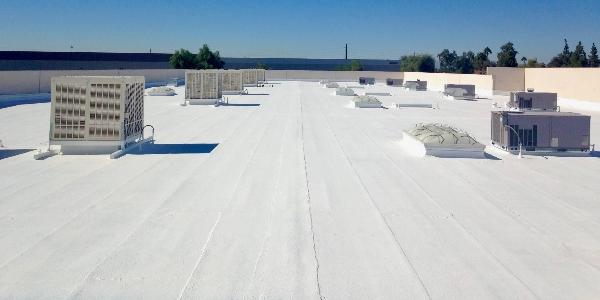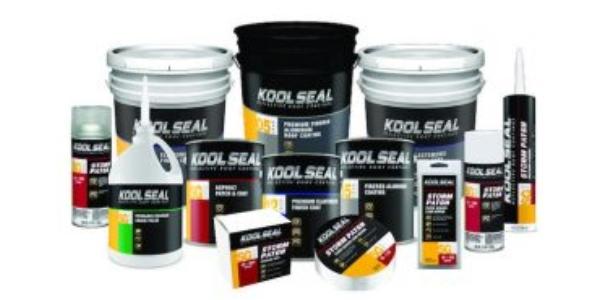To coat or not to coat

By KARNAK.
Understand how to extend the life of a roof and maximize its effectiveness with roof coatings.
Editor’s note: Share this information with your commercial roofing customers who have aging roofs and are wondering what their options are.
Consistent maintenance is key to extending a roof’s lifespan and preventing water damage, which experienced commercial building owners know. Over time, roofing materials deteriorate from exposure to UV and weather conditions. Therefore, thinking ahead and performing regular care and maintenance will preserve the roof's value. Furthermore, having a thorough roof inspection done will help to determine whether you decide to coat your roof or wish to opt for an entire roof replacement. Our team at KARNAK has provided tips that can promote the longevity of your property’s roof.
Schedule a roofing inspection first
Before making this decision, a roof inspection from a licensed roofing expert should be conducted to determine the current condition. Typically a moisture survey is done that would also include core sampling. Core sampling involves taking samples from the roof from suspected areas and evaluating for water saturation. If there are signs of extensive water-damage underneath and throughout then a full roof replacement is recommended as the integrity of the roof structure is questioned. There are many benefits of a new roof, such as added value and newer durable materials are typically used. Also, depending on the interior operations of the building, it may be advisable to schedule the work to be done outside working hours without building inhabitants, as the work is relatively noisy and can create airborne debris. In some cases, the damage may be localized so only the roofing in a particular section would need to be removed and replaced. This would minimize interruption of activities inside the building and allow a coating to be applied to the remainder of the roof and newly replaced section(s).
The utility savings and cooler building temperatures
Now if the roof is in sound condition, then a roof coating is the economical and sensible option for maintenance. In addition to being a sacrificial layer, a reflective roof coating will reflect the solar UV and heat which will both slow the degradation of the roof and reflect much of the latent heat which would typically be radiated down into the building. This may dramatically cut utility costs during summer months when HVAC systems operate longer to keep the interior building space at comfortable temperatures. At the height of summer as temperatures soar, black-colored surfaces can reach temperatures that can burn human skin, while white reflective coating (501 Elastobrite, 502 Elastokote or 670HS Karna-Sil Ultra) can reduce those temperatures significantly.
A more sustainable option
Additionally, it is worth mentioning again that a roof coating does not disrupt the continual operations of the building itself. Since the roof coating involves less material, a smaller crew of contractors, and uses relatively lighter weight products, coating is more advantages then full roof replacement which involves the labor-intensive roofing tear off and subsequent installation of new roof membrane. Further, are the sustainable implications of selecting a roof coating system. This option would prevent the discarded roofing material from becoming landfill waste or prevent the additional energy required to fully breakdown and recycle the residual bulk material. As for the roof coating, Karnak offers low-VOC (Volatile Organic Compounds) options, to even further reduce the carbon footprint of selecting a roof coating.
Original article source: KARNAK
Learn more about KARNAK Reflective Coatings, Sealants and Cements in their Coffee Shop Directory or visit www.karnakcorp.com.























Comments
Leave a Reply
Have an account? Login to leave a comment!
Sign In